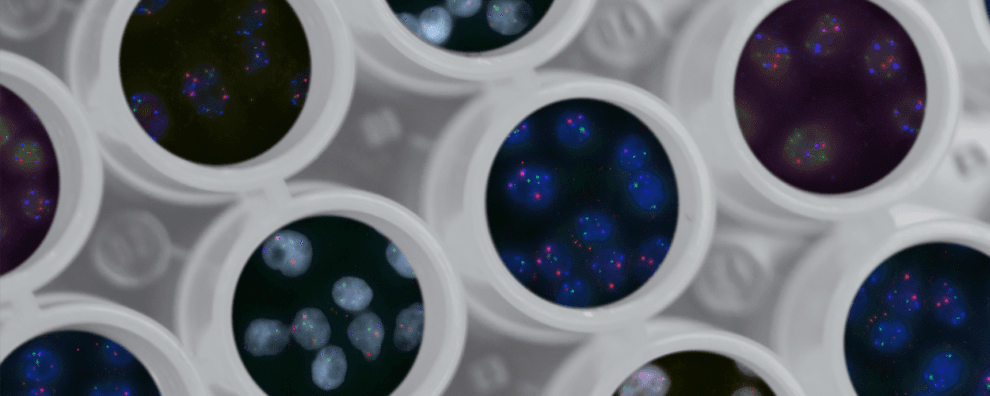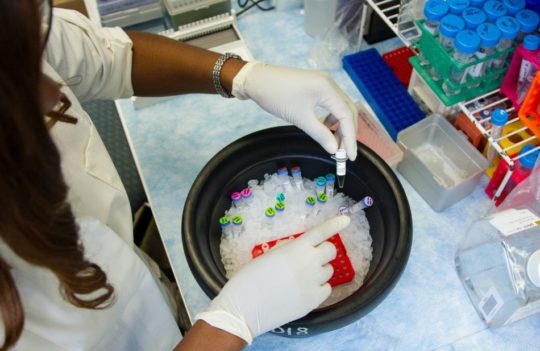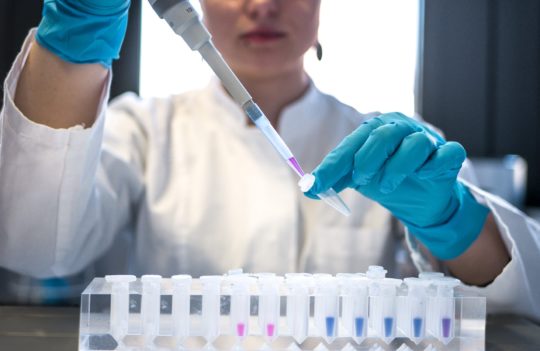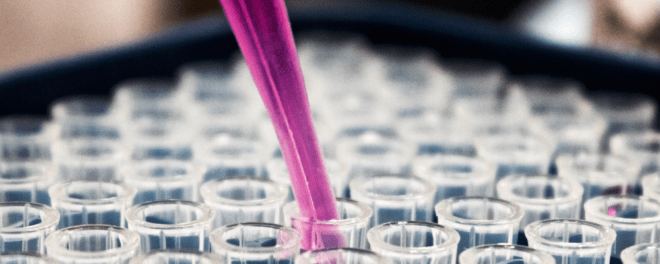 Protein production
Protein production
Putting rAbs on the map – recombinant antibodies as invaluable research tools
Antibodies are vital reagents for biological and biochemical research, useful for determining protein function under normal and pathophysiological conditions. Due to their versatility, they can be used in multiple applications. But antibodies can be either produced natively in hybridoma cell lines or in recombinant cell-based systems. And it is important to understand if the production process influences the key properties of these reagents.
Recombinant versus monoclonal or hybridoma-produced antibodies
In research, most antibody reagents have been conventionally generated by subculturing hybridoma cell lines. Hybridomas, hybrid B cells immortalized by fusion with myeloma cells, can be routinely cultured under standard laboratory conditions and secrete reasonable quantities of IgG antibodies. However, using hybridomas to generate immunoreagents comes with significant limitations:
- Genetic drift: hybridoma cells frequently lose antibody-encoding genes leading to unexpected delays in production.
- Poor characterization: most hybridoma cell lines currently stored in cell banks and used by multiple research groups have not been properly characterized, therefore, their epitope-binding specificity and antigen selectivity are often unknown. For this reason, many hybridoma-generated antibodies can result in off-target binding, increasing the background noise and accuracy of many immunoassays.
- Risk of sequence loss: due to the lack of characterization, losing hybridoma cells may lead to the irreversible loss of the immunoreagent.
- Lower purity: many hybridoma cell lines are unable to grow in serum-free media, which contains other immunoglobulins likely to contaminate the final antibody stock, leading to lower accuracies and production yields.
- Limitations in terms of antibody structure: hybridomas only secrete Y-shaped IgG antibodies and are unable to produce nanobodies (VHH) or other antibody fragments such as Fab or scFv, which may only be obtained through time-consuming antibody fragmentation processes.
Many of these pitfalls can be resolved by recombinant expression. In contrast to native production in hybridomas, rAb production starts with antibody-encoding sequences. These sequences are subsequently optimized for expression in mammalian hosts and cloned into suitable expression vectors. CHO and HEK293 are two the most popular hosts for rAb production, with CHO offering more advantages in terms of post-translational modification and protein folding.
Unlike hybridomas, CHO cell lines are well adapted to chemically-defined media, leading to higher purities. Moreover, because the antibody sequences are known, the risk of antibody loss is averted.
Sequence availability allows the extensive characterization of the bioreagents in terms of antigen binding, selectivity, and epitope-specificity, among others. Because the sequence is known, rAbs become more amenable to antibody engineering and reformatting processes. Finally, recombinant systems can produce a vast diversity of antibody formats such as Fab, scFv, VHH, and bispecific antibodies, among others.
Functional applications of recombinant antibodies
Due to their higher purity, recombinant antibodies are versatile reagents with multiple applications:
- Detect, quantify, or capture targets
- Promote or block specific protein interactions, helping to unravel unknown biological activities
- Detect temporal and spatial patterns of protein expression in both cells and tissues, helping to understand how these patterns are affected by disease and specific treatments
Despite the many benefits of using recombinant antibodies, their use in research is far from being widespread. Several challenges continue to hinder their adoption such as difficulties in implementing recombinant antibody production workflows, costly reagents, the need for antibody sequencing (from protein or hybridoma), and, frequently, the need for extensive process optimization.
Several commercial solutions exist that allow overcoming these common pitfalls. One of the most efficient solutions is relying on transient expression systems such as XtenCHO™ – ProteoGenix’s high yield and low maintenance cell line.
Our new system was designed with smart protocols with fewer steps and efficient reagents to allow the seamless integration of recombinant expression into existing workflows. Together with a highly efficient expression vector, growth medium, and a one-step transfection reagent, XtenCHO™ is currently one of the most cost-effective solutions on the market.





